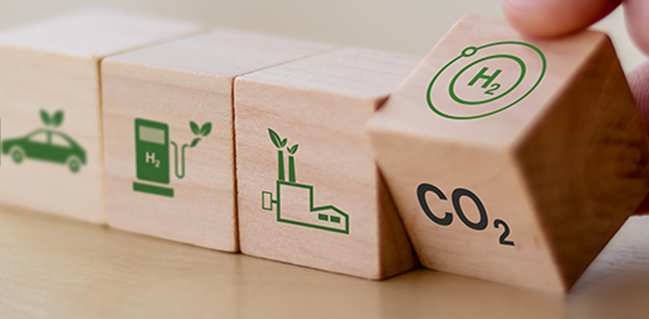The blue ammonia market is experiencing explosive growth at 62.3% annually, transforming from a nascent $78 million industry into a projected $7.6 billion powerhouse by 2030. As governments worldwide pivot toward hydrogen economies and demand for low-emission fuels skyrockets, blue ammonia companies like Yara International, Saudi Aramco, and CF Industries are betting billions on this carbon-capture technology that could reshape fertilizer production, maritime fuel, and power generation.
According to the MarketsandMarkets, the global blue ammonia market is projected to reach USD 7,664 million by 2030 from an estimated USD 78 million in 2023, at a CAGR of 62.3% from 2023 to 2030. That’s nearly a 100-fold increase in just seven years, a growth trajectory rarely seen outside of breakthrough technologies.
Blue ammonia represents a critical bridge technology in the global race to decarbonize. Unlike traditional ammonia production, which releases massive amounts of greenhouse gases, blue ammonia captures and stores CO2 emissions during manufacturing. This makes it particularly attractive for fertilizer producers, shipping companies, and power generators facing mounting regulatory pressure.
Blue ammonia demand has increased in recent years because of increased government focus on establishing blue ammonia-based economies and investment in blue ammonia infrastructure, according to the MarketsandMarkets report. The industrial feedstock segment primarily fertilizers is expected to be the fastest-growing application, driven by customer willingness to pay premiums for greener alternatives.
Among production technologies, steam methane reforming (SMR) dominates the landscape. It’s cost-effective, energy-efficient, and produces high-purity hydrogen, the building block of ammonia production. However, autothermal reforming (ATR) and gas partial oxidation technologies are gaining traction as companies seek to optimize carbon capture rates and production efficiency.
The technical complexity hasn’t slowed investment. In fact, it’s accelerated it.
Major Blue Ammonia Companies are Making Multi-Billion Dollar Moves
The blue ammonia market is dominated by a few major players that have a wide regional presence. The major blue ammonia companies are:
Yara International and BASF are collaborating to develop a world-scale low-carbon blue ammonia production facility in the U.S. Gulf Coast with capacity reaching 1.2 to 1.4 million tons annually. Saudi Aramco successfully delivered the first blue ammonia shipment to Japan, marking a milestone in the low-carbon ammonia value chain. OCI announced plans to construct the biggest blue ammonia facility in Texas, a $1 billion investment that could eventually double capacity to 2.2 million tons per year.
CF Industries and Mitsui & Co. are developing a greenfield ammonia production facility using carbon capture technology that reduces emissions by over 60% compared to conventional methods. Meanwhile, Linde has signed a long-term agreement to supply clean hydrogen and nitrogen to OCI’s new Texas facility.
These blue ammonia companies aren’t small bets; they’re strategic pivots by energy and chemical giants positioning themselves for a low-carbon future.
Geographic Battleground: North America Takes the Lead
North America is expected to be the largest blue ammonia market during the forecast period. The region’s advantage stems from established natural gas infrastructure, favorable regulatory frameworks supporting clean energy investments, and strong demand from fertilizer and power generation sectors.
Europe and Asia Pacific follow closely, with Japan and South Korea emerging as key demand centers for blue ammonia imports. The Middle East particularly Saudi Arabia and the UAE is positioning itself as a major production and export hub, leveraging abundant natural gas reserves and strategic geographic positioning.
What This Means for Industry Professionals
For executives in fertilizer manufacturing, maritime shipping, and power generation, the message is clear: blue ammonia is here. Blue ammonia companies that establish early positions in this market will likely capture significant advantages as regulatory frameworks tighten and carbon pricing mechanisms expand globally.
The industrial feedstock segment alone presents massive opportunities. The fertilizer industry ranks among the largest sources of CO2 emissions, and governments worldwide are endorsing eco-friendly alternatives. Blue ammonia offers a pathway to meet regulatory requirements while maintaining production capacity.
For maritime operators, blue ammonia’s potential as a shipping fuel could solve one of the industry’s biggest challenges: decarbonizing ocean freight. Its energy density and ability to be efficiently stored and transported make it an attractive alternative to heavy fuel oil.
The Road Ahead
The blue ammonia market explosive growth reflects a broader shift in how industries approach decarbonization. Rather than waiting for perfect green hydrogen solutions, companies are investing in blue ammonia as a pragmatic, scalable bridge technology available today.
With major blue ammonia companies like Yara International (Norway), Saudi Arabian Oil Co. (Saudi Arabia), OCI (UK), Ma’aden (Saudi Arabia), and CF Industries Holdings, Inc. (US) leading the charge, the competitive landscape is taking shape rapidly. Technology providers like KBR, Topsoe, and Thyssenkrupp Uhde are also playing crucial roles in enabling large-scale production.
For industry professionals seeking deeper insights into market forecasts, company strategies, and regional opportunities, the complete MarketsandMarkets Blue Ammonia Market report offers comprehensive analysis of this transformative sector. Access the full report and exclusive market data to understand how blue ammonia market could reshape your industry’s competitive dynamics through 2030.
The blue ammonia market represents one of the energy sector most dramatic growth stories. With 62.3% annual growth projected through 2030, early movers stand to capture significant market share in this emerging clean fuel economy.

